Yuchen Ge 葛钰晨
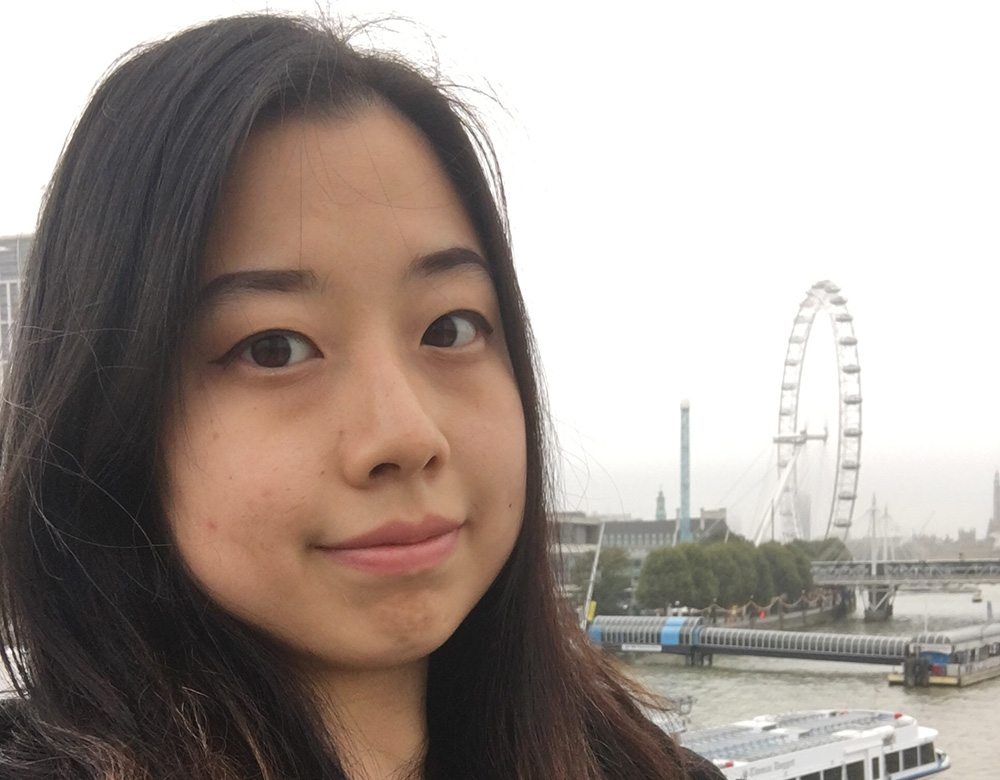
Year of birth: 1996
Where do you live: Edinburgh
Your education: MSc by Research History of Art, University of Edinburgh; MFA Fine Art, Goldsmiths, University of London; BA Printmaking, Central Academy of Fine Arts
Describe your art in three words: Contemplation, Imagination, Fragrance
Your discipline: Painting, Printmaking, Video, Art History
Website | Instagram
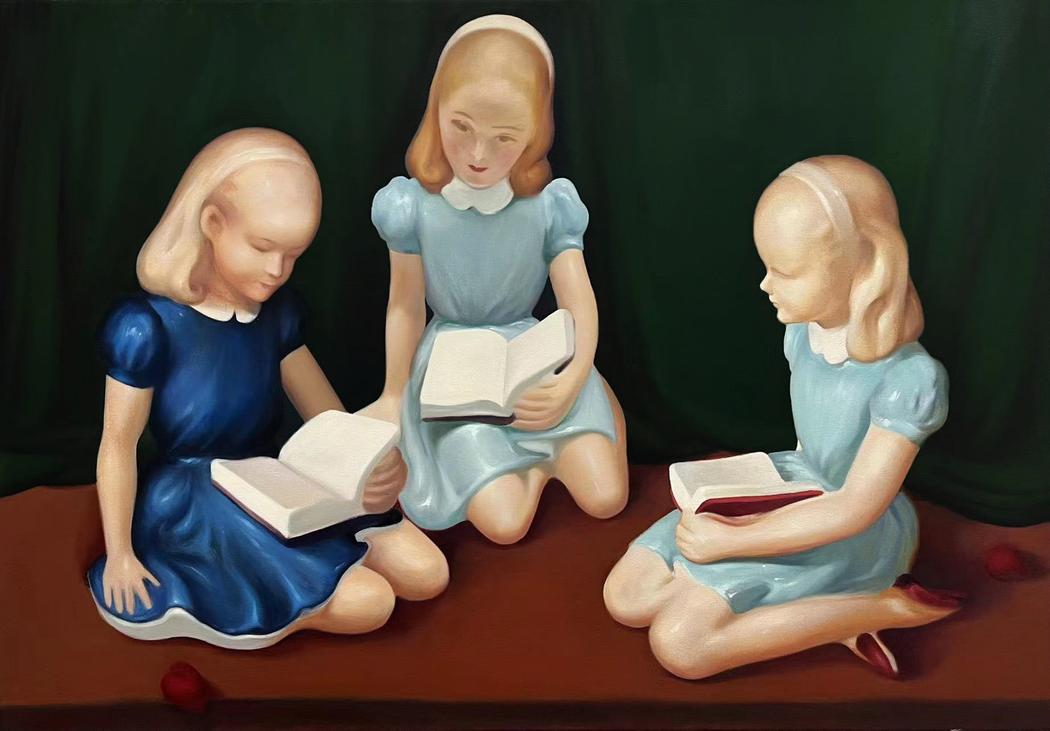 Yuchen Ge 葛钰晨 | Lotus Eater The Erased Stories
Yuchen Ge 葛钰晨 | Lotus Eater The Erased Stories
Your work is deeply rooted in art history and classical techniques. How do you balance academic research with imaginative visual storytelling?
They nourish each other in ways that are often unpredictable and spontaneous. When I write about art history or read for research, part of my mind tends to connect ideas to visual memories – or sometimes it might simply be a feeling. These nuances have largely guided my sketches. At the same time, my practice on canvas inspires my art-historical thinking through forms of expression that cannot be captured in words. The moment being fully absorbed in the process of painting feels like a grand symphony, it would feel wrong to try and summarise it immediately. After years of embracing both modes and trying to better understand their unique dynamics, I have learnt not to see the two – academic research and imaginative visual storytelling – as a duality, in fact, they complement each other so well because of their difference in methodology and through process.
You often mention “imaginary history” as a key concept. Can you elaborate on what this means to you and how it manifests in your work?
The dynamics between the very immediate experience of painting practice and the predominant sentiment of history in this process very much fascinates me – visual forms informed by both historical imagery and ongoing intellectual inquiry – which I call an imaginary history. Old masters’ art and literature are good starting point to elaborate. My fine art educational background has been centred on traditional studio training, especially in oil painting and printmaking (primarily etching and woodcut). I enjoy exploring visual references from historical painting and literature, such as Magdalene from George de La Tour’s work and figurines of Alice from Alice’s Adventures in Wonderland that I featured in my work. The way these classic imageries talk to you – with the literal familiarity and your own conception on them – always changes each time you see them, every different context makes them different, yet still very visually familiar. It is similar to what Sigmund Freud called ‘the uncanny’, but I’d say it is not enough to conclude a state like this knowing there is a term to rely on, rather, it is a nuanced creative space in the mind, situated between taught knowledge (what you already know about Alice in Wonderland by Lewis Carroll) and your immediate perception (what this exact Alice-looking figure makes you think right now). It is about history, but not based on history; it moves beyond what you have been taught about history. This is an imaginary history – what my works are currently exploring.
 Yuchen Ge 葛钰晨 | Magdalene
Yuchen Ge 葛钰晨 | Magdalene
Many of your paintings feel like theatrical scenes frozen in time. What role does narrative play in your creative process?
I like the description ‘theatrical scenes frozen in time’. I really enjoy observing how specific scenes or details are staged in oil painting, stage show, and opera. These silent moments present a pure and concentrated form of art at that very single minute – emotional temporality – a moment suspended in time that captures an entire narrative, without relying on validating through formalist concerns such as colour, shape, and contrast. This emotional temporality is what I currently pursue in the sense of narrative in my work.
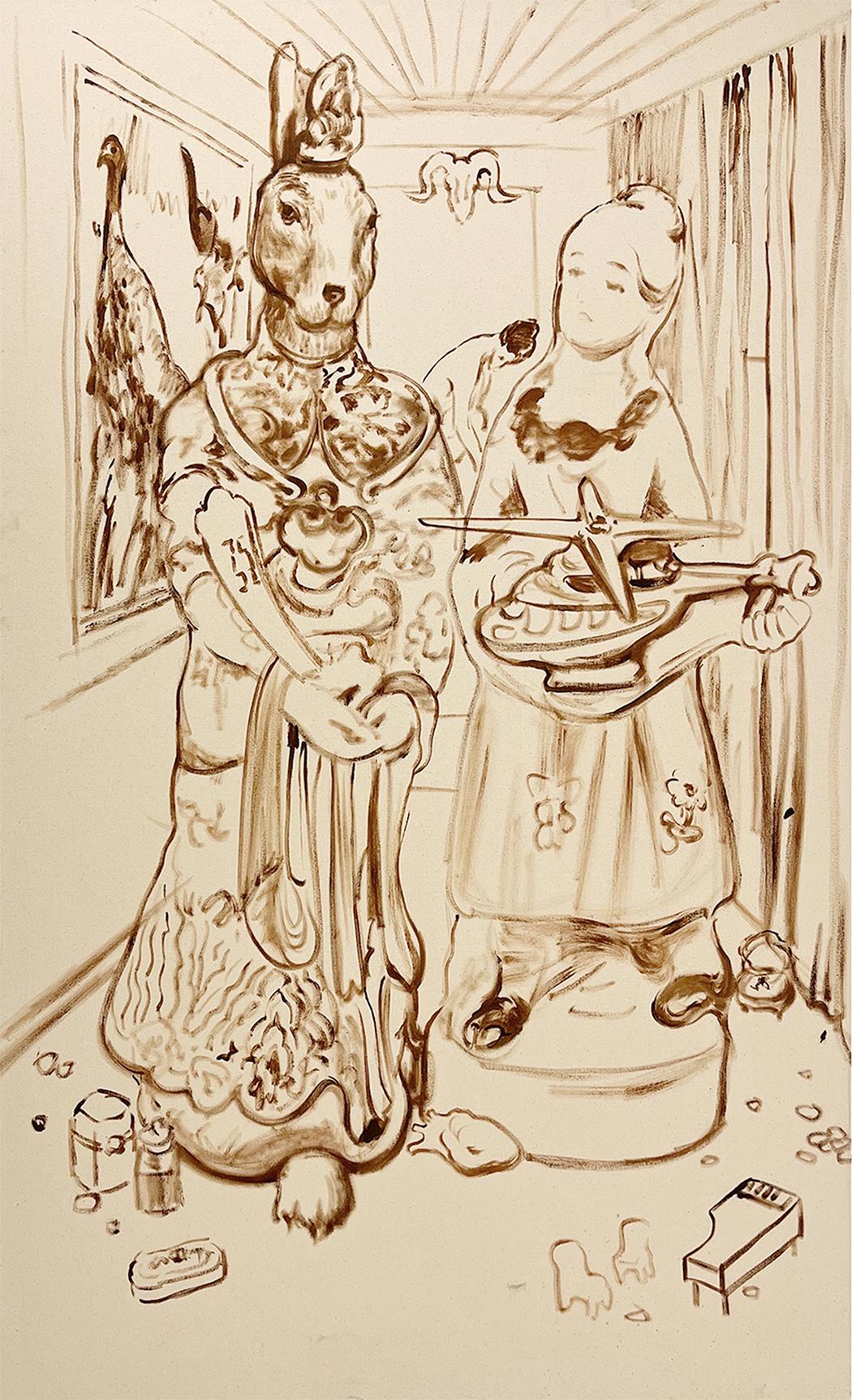 Yuchen Ge 葛钰晨 | Delft Blue
Yuchen Ge 葛钰晨 | Delft Blue
How has your academic journey across institutions in China and the UK shaped your visual language?
I studied at Central Academy of Fine Arts (CAFA) in China, China’s first national-level institution of higher education dedicated to the arts. CAFA has been influenced by European art traditions – initially French, and later Russian, along with their respective systems of education. My time there provided me with rigorous academic training: art anatomy, traditional glazing techniques and chiaroscuro in oil painting, realistic sculpture, and my major – printmaking, with a focus on etching. These foundations have deeply shaped my artistic language.
I’ve always been attracted to those rich emotion, aesthetics, and poetic movement of brushworks found in the paintings of artists such as Caravaggio, Rubens, and Watteau. At the same time, I developed a passion for exploring a calligraphical, sketch-like language, combined with expressions through colour and subject matter – a pursuit strongly informed by traditional Chinese motifs, and the Chinoiserie. For example, in Delft Blue (2022), an ancient Chinese zodiac sign – the Rabbit – is standing in a room with an English ceramic figurine of a lady. Instead of a violin, she holds a helicopter. The space, filled with miniature, resonates the room in The Arnolfini Portrait by Jan van Eyck, while on the wall there hangs taxidermy birds that was once adored in history.
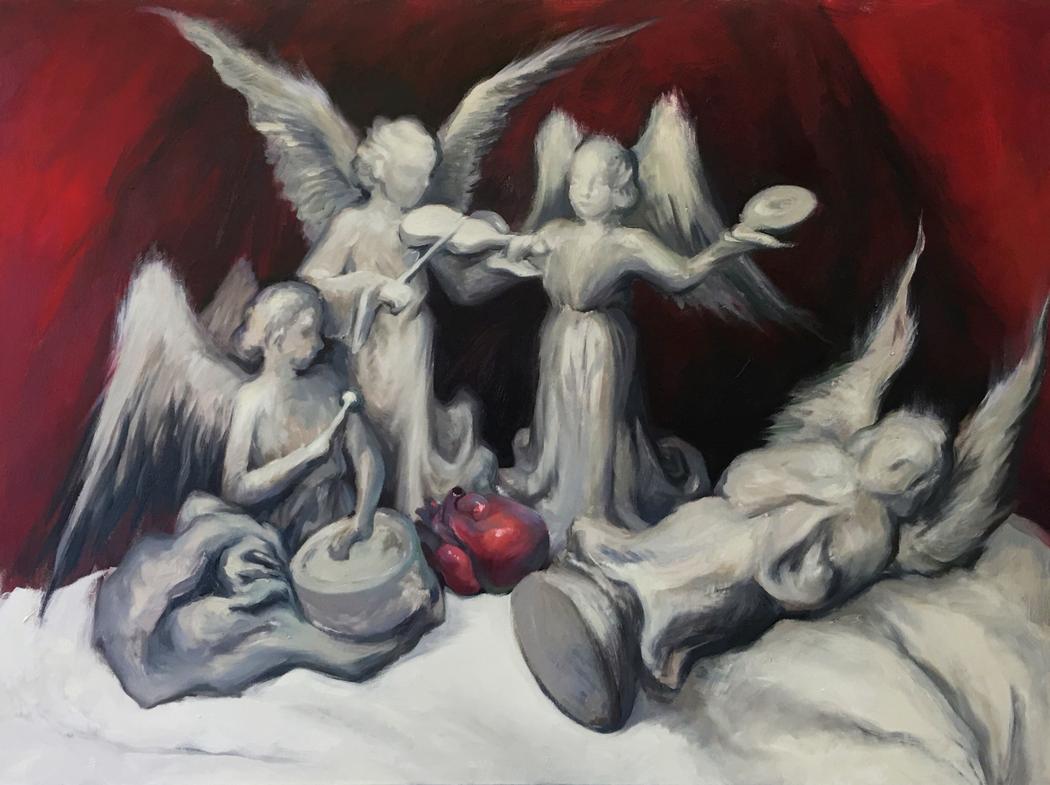 Yuchen Ge 葛钰晨 | Vice Versa
Yuchen Ge 葛钰晨 | Vice Versa
Can you talk about your technical process—especially your experiments with rabbit skin glue, oils, and soft-ground etching?
I prepare my canvas with pure rabbit skin glue solely. The process is quite straightforward: the glue, which comes in hard granules, needs to be soaked in water overnight. It is then gently heated in a container that allows for both warming and storage, ensuring it doesn’t burn. Once it becomes a smooth liquid, it’s ready to be applied evenly onto the canvas. I prefer to paint directly onto the rabbit skin glue ground, as it creates a velvety texture, in my opinion, better complements the flow of pattern and floral flourish in my work. But for the traditional process, once the glue layer dries, one or more coats of lead white would be applied to prevent the oil colours from sinking into the canvas. Today, titanium white is used as a safer alternative.
Soft-ground etching is a technique that is very welcoming, you can combine it with a lot other materials – both conventional and unconventional, such as sand or sponge, and the outcomes are often unpredictable. I enjoy drawing with oil crayon and brush on a soft-ground plate, which creates rich, sketch-like lines. When the soft-ground layers are combined with other techniques, such as aquatint which brings ultra dark shades, the result brings a manuscript-styled visual language offering a lot to explore.
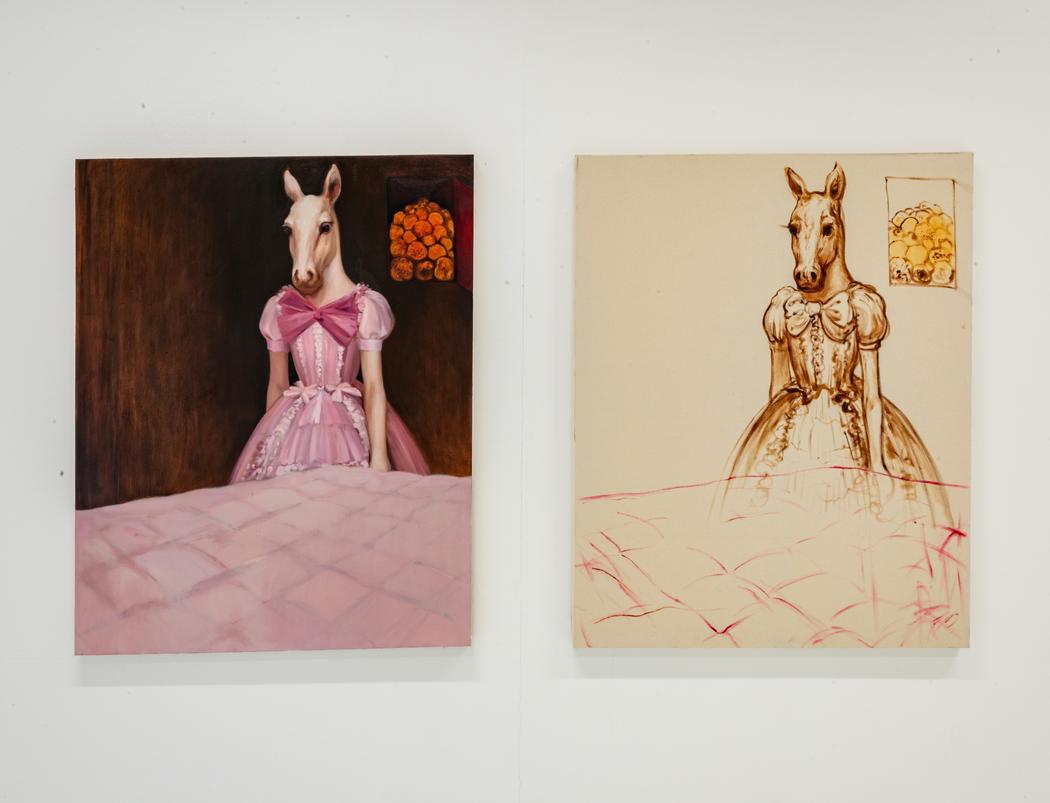 Yuchen Ge 葛钰晨 | Straight From The Horse S Mouth
Yuchen Ge 葛钰晨 | Straight From The Horse S Mouth
Your imagery often features a blend of historical references and dreamlike figures. Do you begin with a clear plan or let intuition guide the composition?
My process involves much more contemplation than actual execution. The painting develops all in my head, I don’t record it in any manner but I do give it enough time to form, as no physical form can resemble such ideas accurately enough. It is like a seed, growing and growing, whenever I’m ready I start painting. I use sketch as a reminder – like a note pad – to record visual ideas when it comes to more specific decisions on canvas. Intuition? Yes, but I am very aware of its agency and limitation in my work: where and how it will dominate, exist, and stop. Dreams inspire my works to a great extent as always, and historical reference sometimes perfectly complements the conversation in my work, they inspire me as different forms of reality rather than in a duality of real and imaginary.
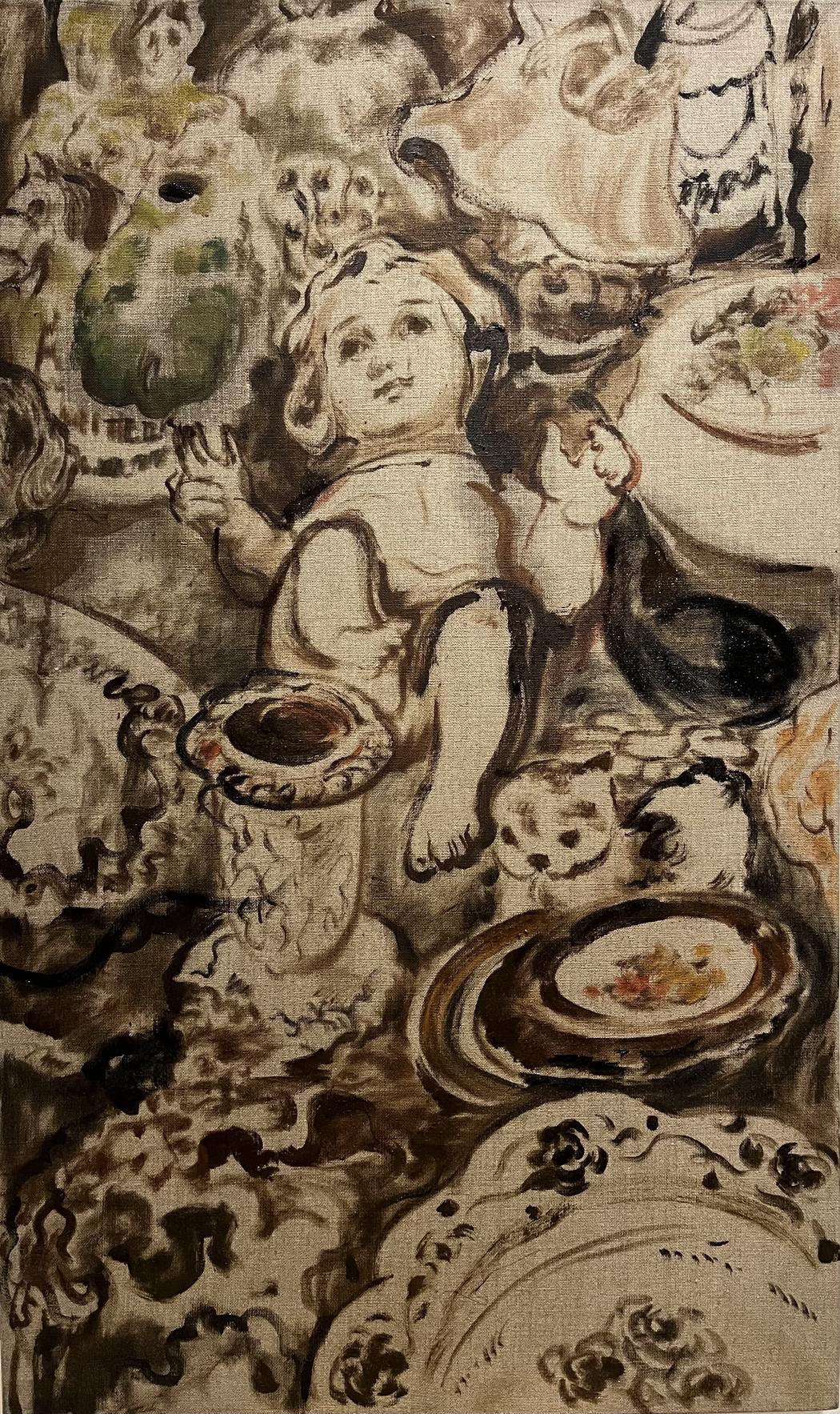 Yuchen Ge 葛钰晨 | In The Presence Of Beauty | 2025
Yuchen Ge 葛钰晨 | In The Presence Of Beauty | 2025
Do you see your work as a form of visual philosophy—an inquiry into how we remember and reinterpret the past?
Yes, I think so. I often see my work as a personal manifestation between past and the present – more precisely, between the inevitable influence and presence of the past as a form of romanticised knowledge, and the present personal experience and reading of the past which is subject to now. It is my intellectual inquiry, in the form of visuality.
This can be seen in the way I use art-historical references in my paintings: capturing from a form of past that we all share – the history of art – and offering my thoughts through them, contextualised within the conversation in my work. Dreams and imagination play a central role in my work: they are the main storytellers in my practice who choose to synthesise these more recognisable references or to re-narrate them completely. In this sense, I do see my work as a form of visual philosophy – an inquiry into how we remember, reinterpret, and imaginatively inhabit the past and its form of knowledge.

Leave a Reply